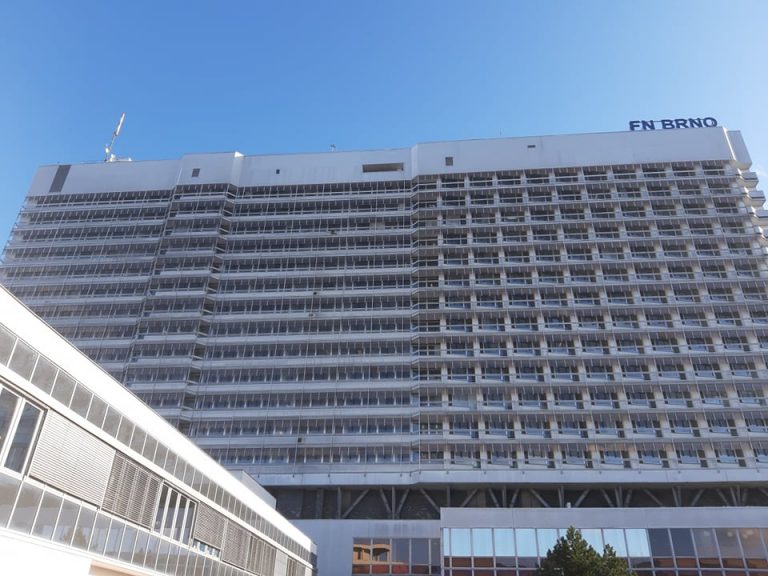Since the first cases of SARS-CoV-2 infection in the Czech Republic, University Hospital Brno (FN Brno) has treated over 3,000 patients with Covid-19, second only to the University Hospital in Pilsen. Dr. Ondrej Ludka from FN Brno argues that reserve bed capacity in backbone hospitals should be increased for times of crisis. Photo credit: KK / Brno Daily.
Brno, Jul 9 (BD) – In the course of the last two years, hospitals around the world have had to adapt to receiving covid patients following specific safety measures, treating a previously unknown disease, and adjusting the operation of entire hospitals, as well as conducting mass testing and vaccination. FN Brno has also had to oversee the establishment and operation of a backup hospital at the Brno Exhibition Centre (BVV), subsequently transformed into a large-capacity vaccination center. “At present, we vaccinate around 5,000 people a day here,” said the deputy medical director of FN Brno, Dr. Ondrej Ludka.
Since the beginning of the Covid-19 outbreak in the Czech Republic last spring, FN Brno has treated over 3,000 patients, second only to the University Hospital in Pilsen.
For this reason, it was necessary to repurpose a large number of beds and move paramedics to the so-called “Covid” departments. At the same time, a large number of personnel were needed at the testing sites to diagnose positive cases.
Another burden on the employees of FN Brno came with the construction of a backup hospital at the Brno Exhibition Centre. “Fortunately, we didn’t need a backup hospital, but we had to keep it in reserve in case it was needed,” said Ludka. “After it was found that it would not be used, we adapted it for vaccination at the beginning of the year to provide a large-capacity vaccination center, which gradually reached the highest numbers of vaccinations in the country.”
According to Ludka, the coronavirus epidemic revealed the absence of a clearly defined backbone network of hospitals in the Czech Republic, which should have a number of free beds in case of equivalent emergencies or disasters.
“It is necessary to realise that these beds cost something, but if they are unoccupied and are prepared just for the case of patients in such a difficult time, they can’t be financed only from the resources of health insurance companies, but require some extra subsidy programs. We should have half the number of beds in backbone hospitals as those that are in full use, so that we can handle just these kinds of situations,” said Ludka.
During June, the epidemiological situation finally stabilised, and for a few days the number of patients hospitalized with coronavirus was around zero. Full normal operation of the hospital can therefore now start again.






